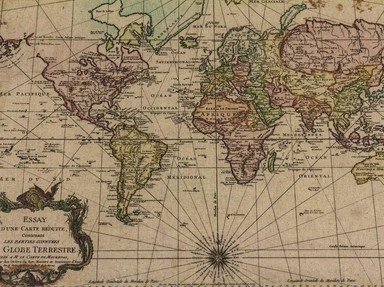Quiz Answer Key and Fun Facts
1. Pompeii, an ancient Roman city, started in about 8th century BC and gradually became an important city. The sudden eruption of Mount Vesuvius in 79 AD caught many inhabitants unaware and buried them alive. Some of their remains, which were submerged in thick layers of ash, were preserved due to non-exposure of outside surroundings. What country is Pompeii located in?
2. Immortalised in the Homeric epic 'The Iliad', Troy emerged from its deep slumber after being discovered in 1868 AD. Remains of part of the wall defending Troy were found, and it appeared to be built sometime in the 13th century BC and destroyed by war in the late 12th century BC. Where was Troy located?
3. Mycenae arose sometime in 1600 BC and declined about 1100 BC. Its huge stone walls and fortifications were food for legends that described Mycenae as the feat and accomplishment of Cyclops. A spectacular artifact excavated in 1876 AD was the Mask of Agamemnon. Which country would you go to visit Mycenae?
4. In Eastern Java of Indonesia, after an intense internal power struggle and a surprise back-stab attack on Mongol forces, Raden Wijaya became the first ruler of the Majapahit Empire in 1293 AD. The Bajang Ratu Temple and Candi Tikus, a bathing pool, can be found in its capital city. It was destroyed and abandoned after being defeated in 1527 AD. What city is mentioned above?
5. Inhabited since 150 BC, this ancient settlement stood at the northwestern coastal area of the Sea of Galilee. Besides being written in the Bible as the dwelling place of apostles James, Andrew, Peter, John and Matthew, buildings like Octagonal Church, House of St. Peter and the Synagogue could be seen there. What is this settlement called?
6. This oasis city situated in the Arabian Peninsula was renowned as the "Atlantis of the Sands". It was also written about in the Qur'an as a city that God destroyed for its immorality. Excavations in the 1990s highlighted its importance as a market for frankincense trade along the Frankincense Trail starting 5000 years ago, until it was destroyed about 300 AD. What oasis city was this?
7. Situated strategically on a major trade route, the Aksumite Empire prospered. Aksum was its capital city. In 324 AD, King Ezana became a Christian and introduced Christianity across his empire. Its prosperity was undermined when Islam rose to power during the 7th century AD, followed by a slow decline. Which modern country is Aksum located in?
8. Gamla Uppsala was a huge city of commerce beginning in the 3rd century AD. Three royal mounds found there were said to be resting the places of Thor, Odin and Freya. Freya was said to have lived in Gamla Uppsala and was credited for building Uppsala öd and the Temple of Uppsala. The temple was destroyed later on. Which country is Gamla Uppsala located in?
9. Tiwanaku rose in 1500 BC and declined around 1000 AD. It had no written language, but left its anonymous yet enduring legacy behind through ancient temples like Kheri Kala, Putuni, and Kalasasaya.. However, there was a bigger and more important building from where city matters were governed; it was known as the Akapana Pyramid. What country is Tiwanaku located in?
10. The Olmec civilisation started around the early second millennium BC and declined some time in 400 BC. Many villages and cities prospered at different times, but the two main cities that arose were Tenochtitlan (San Lorenzo) (1200 BC-900 BC) and La Venta (900 BC-400 AD). In which country are both cities located?
Source: Author
knightmyst
This quiz was reviewed by FunTrivia editor
Pagiedamon before going online.
Any errors found in FunTrivia content are routinely corrected through our feedback system.
